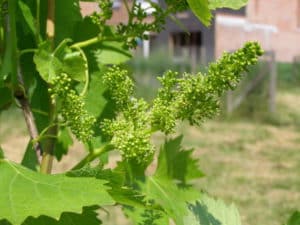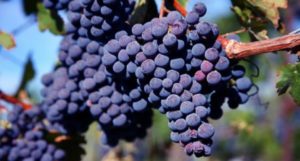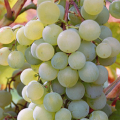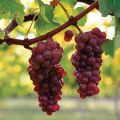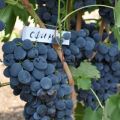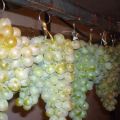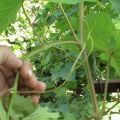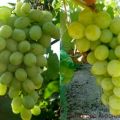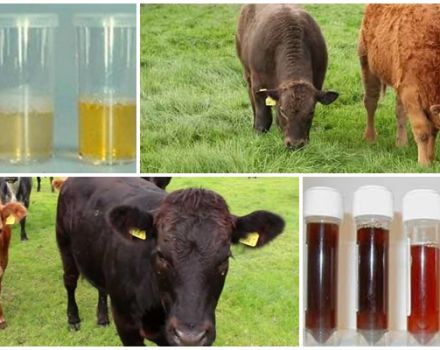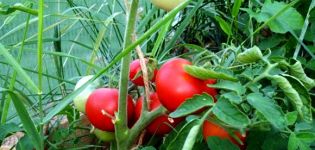Description and characteristics of the Marquette grape variety, history and features of cultivation
The Marquette grape variety is considered relatively young, but has already established itself as promising. It is excellent for fresh consumption and as a raw material for making wine, which is fragrant and has a pleasant aftertaste. If you want to evaluate the merits of the variety, it is worth learning about its features and rules of care.
Grape variety Marquette
Black bunches of grapes do not attract attention by their appearance. Such a goal was not pursued when breeding the variety, since the grapes were created for use for technical purposes. Moreover, all the other qualities of the plant are considered to be among the best.

Breeding history
Work on the development of the Marquette grape variety began in 1989. Seedlings for selection began to be selected earlier and two types of grapes were selected - Rava, hybrid culture MC 1094. A new type of plant appeared thanks to the works of American scientists. The variety immediately received high marks, and the wines made on its basis were successfully tasting.
In Russian regions, grapes have been cultivated for 10 years, but for most gardeners it remains unknown. Experts are confident that the situation will change soon, and it will take its place of honor, pushing back the well-known and popular varieties.
External parameters
An interesting feature of grapes is vertical growth, which allows the plant to receive the maximum amount of sunlight. The brushes with dark colored berries are of medium size and conical shape. The shade of the fruit can be so intense that it appears black.
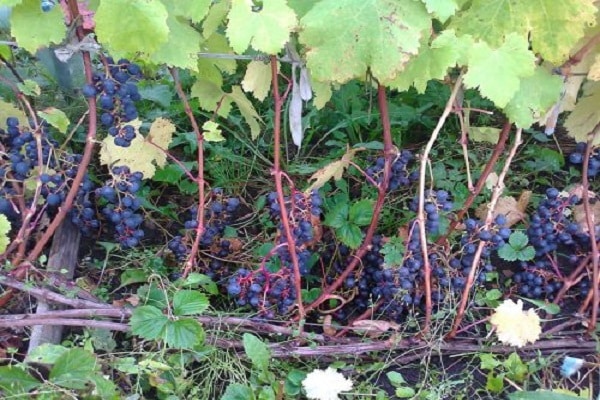
Pros and cons
The Marquette grape variety is considered an ideal raw material for making wine. When growing it, you do not need to spend a lot of effort on care, since the plant belongs to the unpretentious category. The advantages of the Marquette grapes include:
- decent taste characteristics;
- unique ability to survive at low temperatures;
- excellent immune properties, especially against fungal diseases;
- unpretentious care;
- fruiting stability.
Some gardeners note the lack of beauty of the grape bunches and say that there are varieties that can form larger bunches of weight. The disadvantage is the susceptibility of young shoots to spring frosts, already when the temperature drops to -3 C shoots may die.
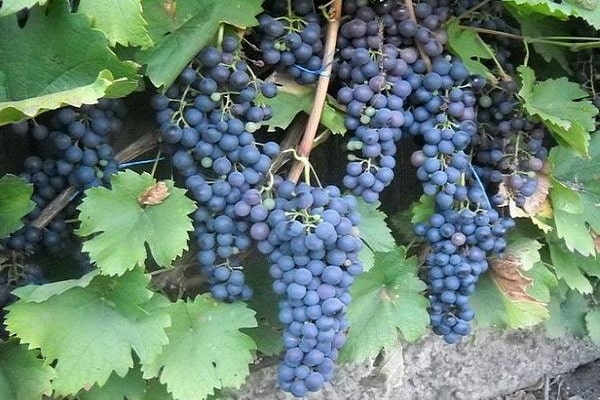
Variety characteristics
The Marquette grape variety is a hybrid species with an average ripening period. Vertical shoots give off black grapes with fruits, the tasting qualities of which are recognized as one of the highest.
Frost resistance
The variety has the unique ability to survive in cold climates. He is not afraid of lowering temperatures to -38 C. Due to this feature, many gardeners allow themselves not to waste time organizing a shelter for the plant.
Exposure to mildew and powdery mildew
The variety is highly resistant to diseases dangerous for grapes - mildew, oidium. To prevent infection, prophylactic spraying with Bordeaux liquid, copper sulfate solution or targeted drugs is carried out.
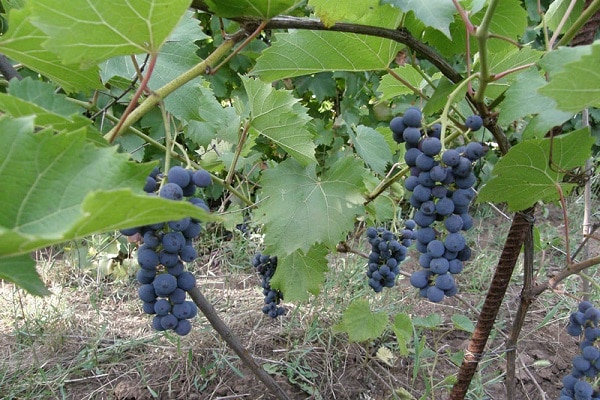
Pollination
The plant produces bisexual fruits, so there are no problems with pollination. This property allows you to form plantings of only one variety and ensures insect independence. Good pollination quality is facilitated by light pollen, which is easily carried by even a slight gust of wind.
Description of fruits
The black fruit is characterized by a regular round shape and dark color. The pulp has a unique taste.
Sweetness and acidity
Increased sweetness is the hallmark of the Marquette variety. The acid content is 2.9%, sugar up to 30%. To preserve the taste, it is necessary to organize a timely harvest.
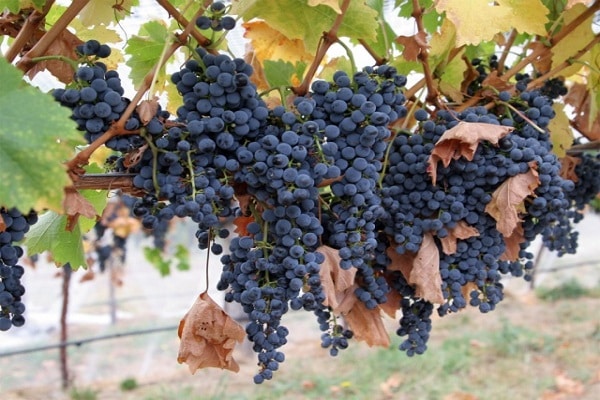
How much does a berry and a bunch weigh on average?
The plant forms a medium sized brush. The mass of a bunch can reach 300-400 g. From 1 hectare, up to 100 centners of berries are removed.
Planting seedlings
To purchase seedlings, you need to choose trusted sellers, give preference to specialized nurseries. The plant should not show signs of damage or rot. On the root system, it is important to have "live" shoots, which should be elastic and have a whitish tint.
Landing in open ground
The soil is prepared in advance, carefully digging it up and freeing it from the remnants of vegetation. The pit for planting seedlings should be 80 cm deep. The bottom is laid out with humus, a drainage layer is formed and evenly spread roots are covered with soil. The plant needs to be tied up and well watered.

What you need to know when landing
It is important to choose the right place for planting. The soil should be loamy or sandy. Location close to the surface of groundwater will negatively affect the growth of grapes, therefore, their laying higher than 2.5 m is a limitation. The site must be sunny and not subject to gusts of wind. It is important to take into account the compatibility of the culture with "neighbors", since the presence of some garden plants nearby can negatively affect the growth of vines.
The presence of tall fruit trees, potato and eggplant plantings nearby is highly undesirable.
Growing and care
Grape care is standard and does not have any special nuances. The plant needs pruning, watering and periodic feeding.
Cutting the vine
The plant needs pruning. Excess shoots are removed, leaving 35-40 eyes on an adult bush.
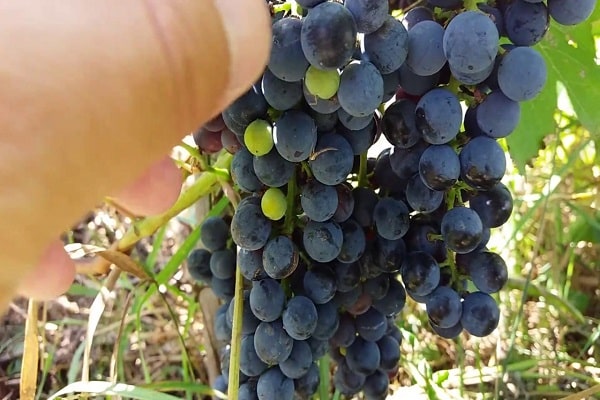
We irrigate and feed
Marquette does not need abundant watering. Abundant watering is required before flowering, which will "wake up" the plant and become an impetus for its active growth. During the growing season, the need for moisture is determined based on the sufficiency of natural precipitation and the degree of soil drying.
It is enough to moisten once a month, while the water should be warm, and the optimal temperature is +15 C.
Simultaneously with watering, you can provide feeding of the bushes. Grapes are capable of assimilating only liquid fertilizers, so the preparations must be water-soluble. In the spring, nitrogen-containing and potassium agents will help accelerate growth. It is especially necessary to support the plant during flowering and ripening. Potassium-phosphorus salts and ash can help in this.
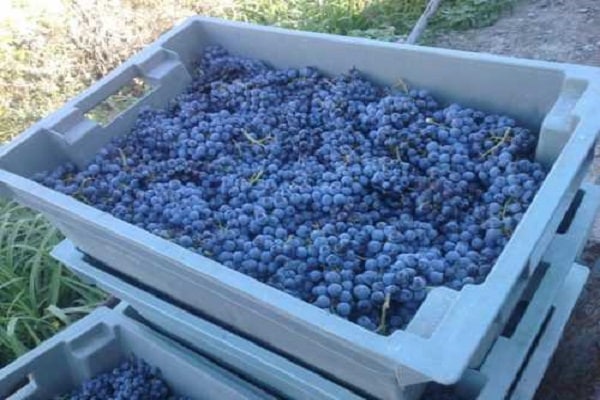
What to do to protect against diseases and pests
Despite the resistance of grapes to diseases, preventive measures should not be neglected. Once a year, they are treated with fungicides to protect the shoots from fungal infections.
Removal of the upper roots and excess shoots
After 3-4 shoots appear, you need to choose the strongest, and the rest must be removed. During the growing season, it will stretch, and by the fall a powerful vine will have formed. Adult plants are examined in the spring, and dry shoots are removed before bud break. In the last days of June, it is recommended to pinch the upper shoots, which will allow the brushes to receive more food. They also prune the bushes, leaving 5 leaves after every second vine.
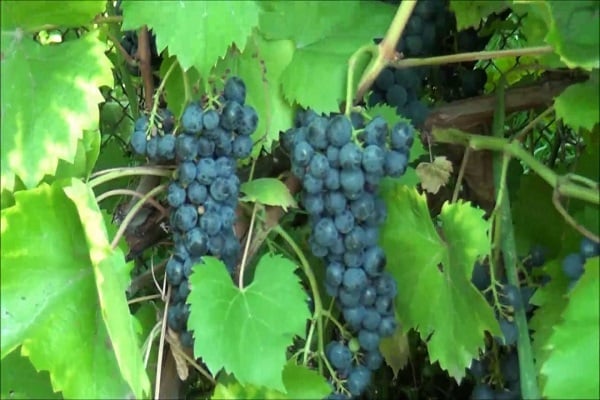
Trimming the top roots close to the soil surface will allow the plant to develop a stronger root system. The presence of such shoots will lead to the fact that in the winter they begin to freeze, which can negatively affect the health of the grapes and its "awakening" in the spring. To do this, dig a hole 20 cm deep and cut the visible part of the appendix with a sharp pruner, trying to do this as close to the root as possible.
Harvesting and storage
It is recommended to thin out the leaves and remove the lower leaf plates 20 days before the planned harvest, which will improve aeration and provide the clusters with more light. In the northern regions, it is recommended to remove clusters with small berries and leave the 2 largest clusters on the shoot.
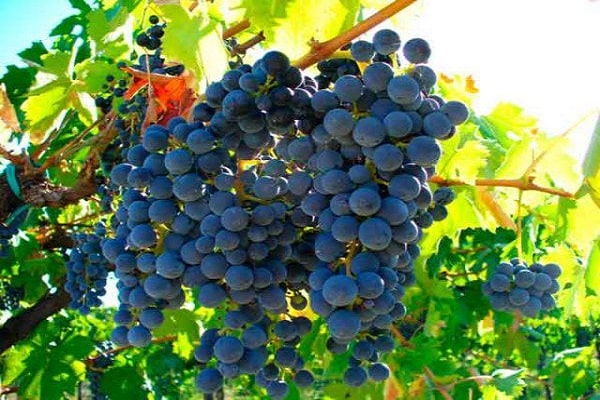
When collecting, it is required to carefully cut off each brush with sharp tools and put it neatly in the container. It is necessary to store fruits at a temperature of +3 C to +10 C. Some gardeners practice hanging the bunches on a wire in the cellar without the brushes touching. Regardless of the chosen method of storing the crop, it is required to carry out periodic inspections and remove spoiled berries.

